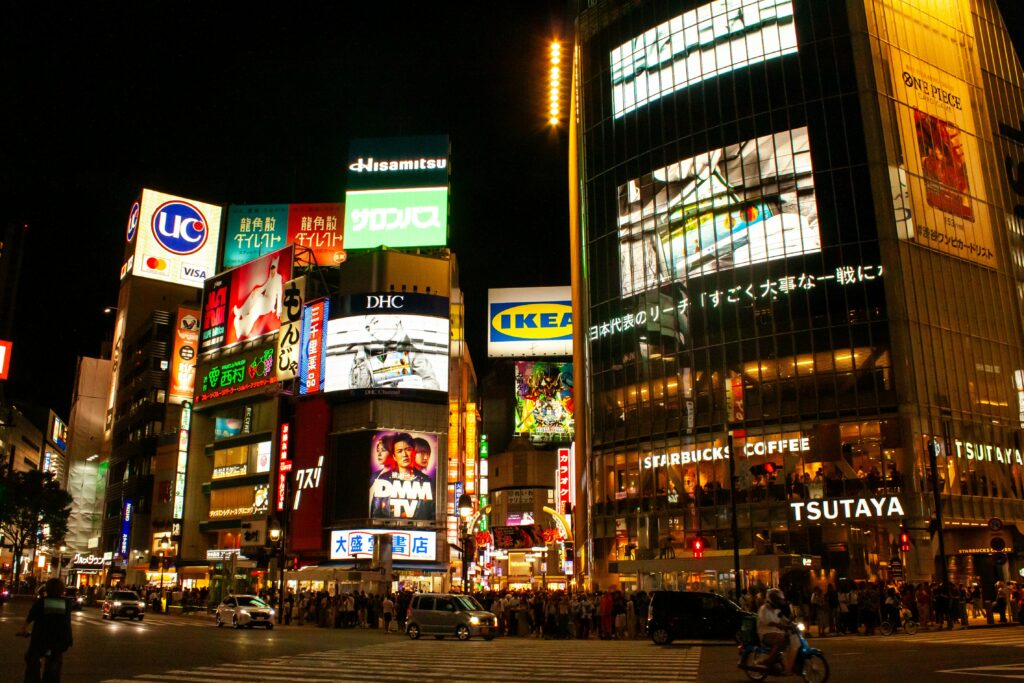Tokyo 2025: Human and Technological Innovation – Gentle Lessons from the Future
Author: Federica Crolla

Tokyo as a Laboratory of the Future
Attending SusHi Tech Tokyo 2025 meant immersing oneself in the vibrant heart of Japanese innovation, where tradition and cutting-edge technology merge into a one-of-a-kind ecosystem.
The name “SusHi Tech” stands for Sustainable High City Tech, reflecting the commitment to promoting sustainable cities through advanced technologies. The event was created to address global urban challenges—such as energy resource management, urban mobility, pollution, and service efficiency—by fostering connections among AI, robotics, nanotechnology, and food sustainability. It creates a dynamic environment where new ideas and technologies can be shared and tested.
Tokyo reaffirms itself not only as a global metropolis but also as a living laboratory for digital experimentation, urban sustainability, and technological transformation.
Technology arises from dialogue among companies, startups, Living Labs that test in real-world environments, academics, tech professionals, citizens, and international exchanges aimed at turning innovation into a common good. Japan seems eager to collaborate not to export solutions, but to import ideas and perspectives. This open attitude—surprising for a country long perceived as “closed”—creates tangible opportunities for co-design in fields like sustainable mobility, e-health, ethical AI, and inclusive interface design.
At SusHi Tech Tokyo 2025, international collaboration took shape with the participation of delegations from 16 countries and regions. Among them, Italy’s Emilia-Romagna Region organized a collective of companies to attend the event, highlighting SusHi Tech’s role as a platform for the internationalization of Italian enterprises.
Japan: Technology and Culture at Human Scale
Japan, often seen as hyper-technological, revealed a more nuanced face: a country where innovation is always at the service of society, simplicity, and the human experience. This human-centered approach emerged as a key thread, illustrating how smart cities can evolve without losing their cultural identity.
The exhibition, related events, meetings at the Shibuya Lab, the visit to Tokyo Innovation Bank, and even simply “getting lost” in the city’s neighborhoods offered a multifaceted portrait of Japan: a blend of hyper-specialization, refined aesthetics, and attention to detail reflected at every level of digital innovation.
Digitalization is all around—but invisible. It appears subtly in transportation, healthcare, public services, and restaurants, but most of all, in the user experience. The Japanese approach to digital is deeply empathetic: it doesn’t just create new interfaces; it seeks to remove barriers—physical, cognitive, cultural—between humans and machines. This vision is clearly evident in the evolution of Human-Machine Interaction (HMI) and UX/UI interfaces.
In Japan, HMI is becoming increasingly contextual: it doesn’t ask users to learn a system but dynamically adapts to their needs. Conversational AI, environmental sensors, and advanced tactile technologies are redesigning interaction—not only to be more efficient but profoundly more human.
UX/UI: Less Visual Impact, More Emotional Resonance
Unlike Western interfaces, often geared toward performance and eye-catching design, Japanese interfaces aim for discretion and a visual language evoking calm, order, and clarity.
Interfaces are minimalist, intuitive, and often inspired by the aesthetic principles of shibui (subtle beauty) and ma (meaningful space). The user experience is designed to accompany rather than impress. The wonder lies in every corner of the city—but that’s another story.
This approach offers valuable insights for rethinking UX design in Western contexts, where users are often “spectators” rather than “protagonists” of interaction.
During a smart mobility showcase, for example, we observed HMI systems designed to reassure: natural ambient sounds instead of beeps, soft color palettes, and nearly “human” voice interactions. It’s a UX that blends seamlessly with its environment.
The Japanese Lesson
Japan teaches us that the HMI and UX of the future will not only be smarter but also kinder, more empathetic, more human. Key takeaways include:
• Humanity First: Japanese design prioritizes emotional comfort over mere efficiency. UX and UI are not just functional elements but tools for trust and human connection.
• Minimalism: The design is understated and natural.
• Multisensory Interaction: HMI integrates voice, touch, visual, and gestural interactions to foster inclusion.
• Design as Culture: Every interface is also a cultural artifact. Japan shows how technology and identity can coexist harmoniously.
• Invisibility and Proactivity: Technologies are “invisible” and integrated but ready in the background to anticipate needs through sensors and AI.
• Co-Creation and Real-World Experimentation: Public-private collaboration leads to innovation that solves real-world problems through shared, field-tested R&D.
• Cross-Device and Inclusive Integration: Experiences transition seamlessly across mobile devices, wearables, and public systems, with accessibility for all ages and abilities.
In the spirit of international collaboration, learning from Tokyo means observing with humility and seeking connections between different approaches—integrating new sensitivities into our design and development processes.
Conclusion
The SusHi Tech experience provided a powerful inspiration to rethink how we design digital experiences: more empathetic, more sustainable, more human. A bridge between East and West that’s well worth crossing—one step at a time, with kindness and respect.
Keep in contact.
If you are interested in collaborating with us or if you would like information about our services, please contact us and we will be happy to help. Let’s get in touch and make something great happen.